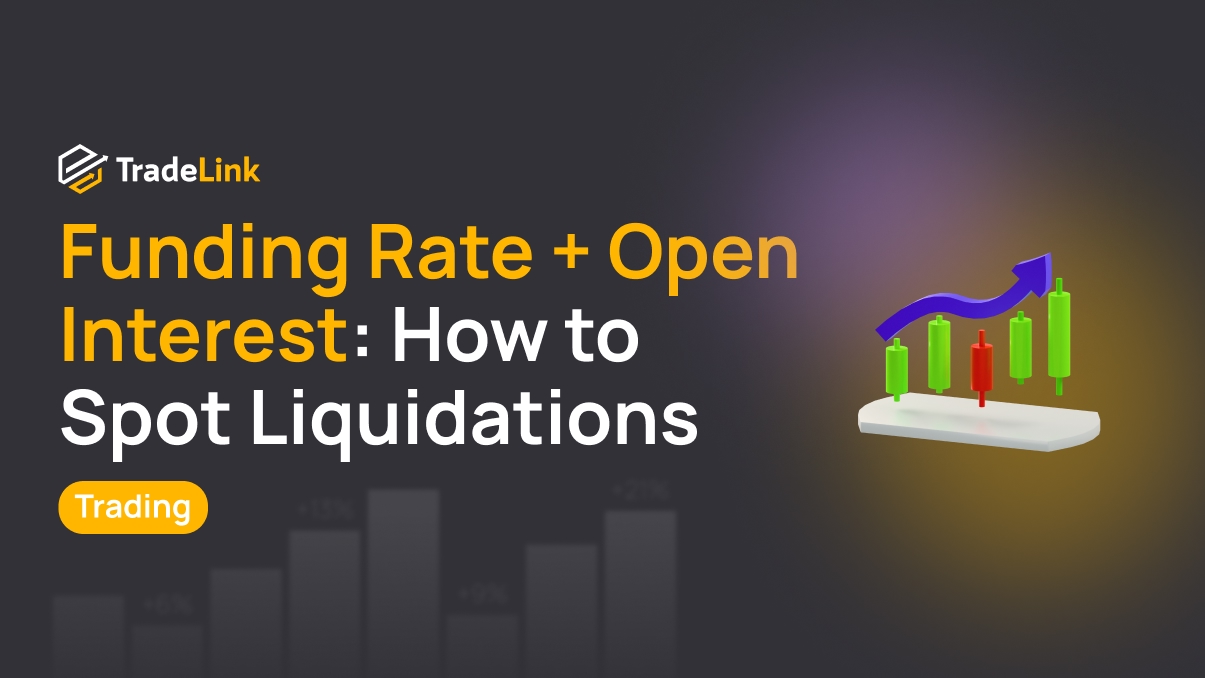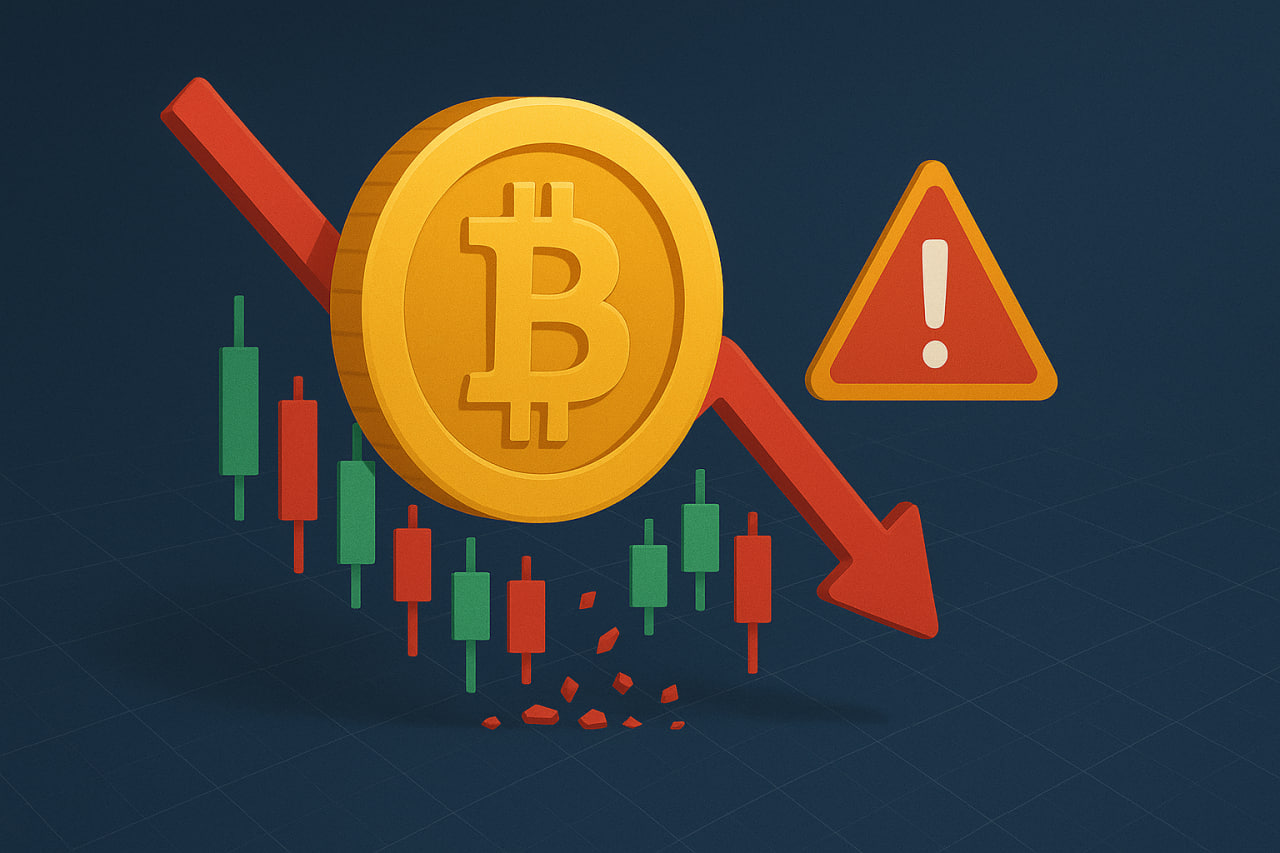Funding Rate + Open Interest: How to Spot Liquidations

Contents
- Introduction
- What is Funding Rate and How It Works
- What Open Interest Shows
- Relationship Between Funding Rate and Open Interest
- How to Identify Potential Liquidation Zones
- What Are Liquidations and How Do They Occur
- Using Funding Rate and OI in Strategies
- Tools for Tracking Funding Rate and OI
- Limitations and Interpretation Errors
- Conclusion
Introduction
Funding Rate and Open Interest are key metrics for analysing cryptocurrency derivatives markets. They help traders assess market sentiment, identify overheated markets, and predict sharp price movements.
When analysed together, these indicators can reveal potential liquidation zones—price levels where mass position closures may trigger impulsive price spikes. This article explores how to use these metrics to identify liquidations and develop trading strategies.
What is Funding Rate and How It Works

Mechanics of Funding Rate
Funding Rate is a periodic payment exchanged between participants holding open positions in perpetual futures. Its purpose is to keep the contract price close to the spot price of the asset, preventing imbalances between long and short positions.
If the market has more long positions, the Funding Rate becomes positive, and long holders pay short holders. Conversely, when short positions dominate, the Funding Rate turns negative, and short holders pay long holders.
Calculation and Significance
Funding Rate is calculated based on market imbalances and the premium over the spot price. Exchanges typically update it every 8 hours. For example, a positive Funding Rate of 0.01% means long position holders pay 0.01% of their position value to short holders.
This metric serves as a sentiment indicator: a high positive Funding Rate signals an overweight of long positions and bullish sentiment, while a negative Funding Rate indicates a dominance of short positions and bearish sentiment.
Use by Traders
Traders use Funding Rate to gauge market dynamics. A consistently high positive Funding Rate may indicate an overheated market with many leveraged long positions, increasing the likelihood of mass liquidations if the price drops.
- Positive Funding Rate: Market overloaded with longs, potential for a pullback.
- Negative Funding Rate: Shorts dominate, potential for a price increase.
- Stable Near-Zero Funding Rate: Balanced market, low likelihood of sharp movements.
- Sharp Funding Rate Spikes: Indicate volatility and possible manipulations.
What Open Interest Shows

Definition of Open Interest
Open Interest (OI) is the total number of outstanding futures contracts in a trading pair. This metric reflects the volume of open positions and the capital involved in trading.
Interpreting OI Growth and Decline
Rising Open Interest may indicate strengthening of the current price movement. If OI grows alongside rising prices, it suggests new long positions. However, rising OI during a price decline may signal the opening of short positions. A declining OI, conversely, indicates position closures, which may result from profit-taking, losses, or liquidations.
| Rising OI | Declining OI | |
|---|---|---|
| Rising Price | Bullish trend, new longs | Position closures: profit-taking on longs or short liquidations/closures |
| Falling Price | Bearish trend, new shorts | Position closures: profit-taking on shorts or long liquidations/closures |
Relationship Between Funding Rate and Open Interest
Funding Rate and Open Interest complement each other. A high positive Funding Rate combined with rising OI may indicate an overheated market with excessive longs, creating conditions for a short squeeze if the price suddenly drops, triggering liquidations. Conversely, a negative Funding Rate with high OI may foreshadow a long squeeze if the market turns upward.
Signals from Combined Analysis
- High Funding Rate + Rising OI: Market overloaded with longs, correction likely.
- Low Funding Rate + Rising OI: Market overloaded with shorts, potential for a rise.
- Stable Funding Rate + Declining OI: Market calming, positions being closed.
These combinations help traders identify the dominant market side and anticipate reversal points.
How to Identify Potential Liquidation Zones
Liquidation zones are price levels where numerous leveraged positions may be forcibly closed upon reaching a specific price. To identify them, traders analyse:
- High Funding Rate: Indicates a skew toward longs or shorts.
- Sharp OI Growth: May signal capital inflow, including high-leverage positions, though large positions can also be opened without leverage.
- Liquidation Heatmaps: Show price levels with concentrated liquidation points, available on platforms like Coinglass.
- Order Book Dynamics: Large clusters of orders at specific price levels or narrow ranges can amplify momentum during liquidation cascades, as stop-loss orders may be hidden behind such clusters. Breaching these levels can trigger mass stop-loss executions.
These signals help identify levels where liquidation cascades may cause sharp price movements.
What Are Liquidations and How Do They Occur

Mechanics of Liquidations
A liquidation is the forced closure of a trader’s position when their margin balance cannot cover losses. In futures, leveraged positions have a liquidation level determined by leverage size, entry price, margin amount, and margin type.
For example, if a trader opens a long position with isolated margin at $50,000 using 10x leverage, the liquidation level might be around $45,000. Positions with 1x leverage or high margin levels may not have a reachable liquidation point.
Process of Automatic Closure
When the price hits the liquidation level, the exchange forcibly closes the position by selling or buying the asset at market price. This can trigger a liquidation cascade, where mass closures amplify price movement, leading to further liquidations.
- Long Positions: Liquidated during price drops, amplifying declines through market sales.
- Short Positions: Liquidated during price rises, amplifying increases through market buys.
Using Funding Rate and OI in Strategies
Traders use Funding Rate and Open Interest to build strategies targeting impulsive movements, squeezes, and reversal points. Key approaches include:
- Short Squeeze Trading: Enter long positions during high negative Funding Rate and rising OI.
- Long Squeeze Trading: Enter short positions during high positive Funding Rate and rising OI.
- Identifying Reversal Points: A consistently high or low Funding Rate that starts declining, combined with rising OI and slowing trend, may indicate resistance to the trend and a potential reversal zone.
- Signal Filtering: Use OI to confirm trends identified via Funding Rate.
- Post-Liquidation Impulse Trading: Enter after a liquidation cascade when the price stabilises.
These strategies require strict risk management, as false signals can lead to significant losses.
Tools for Tracking Funding Rate and OI
Platforms offering tools for analysing Funding Rate and Open Interest include:
- Coinglass: Liquidation heatmaps, OI, and Funding Rate data for major exchanges.
- Binance/Bybit and Others: Most exchanges provide built-in OI and Funding Rate charts for their futures markets.
- TradingView: Indicators for analysing OI and Funding Rate, integrated with charts.
- Glassnode: Historical derivatives data for in-depth analysis.
These tools help visualise metrics and identify entry points.
Limitations and Interpretation Errors

Funding Rate and Open Interest are powerful tools, but their analysis has limitations:
- False Signals: Sharp OI spikes may result from hedging positions, not speculative ones.
- Manipulations: On low-liquidity assets, Funding Rate can be distorted by large players.
- Temporal Distortions: Data on small timeframes may contain noise, skewing the true picture.
Analysis should combine these indicators with other tools, such as support/resistance levels and news context.
Conclusion
Funding Rate and Open Interest are valuable indicators for cryptocurrency derivatives traders. They help identify market imbalances, locate liquidation zones, and predict price impulses.
However, their effectiveness depends on proper interpretation and context. By combining these metrics with order book analysis, liquidation heatmaps, and fundamental factors, traders can improve strategy accuracy. Risk management and filtering false signals remain critical for successful trading.